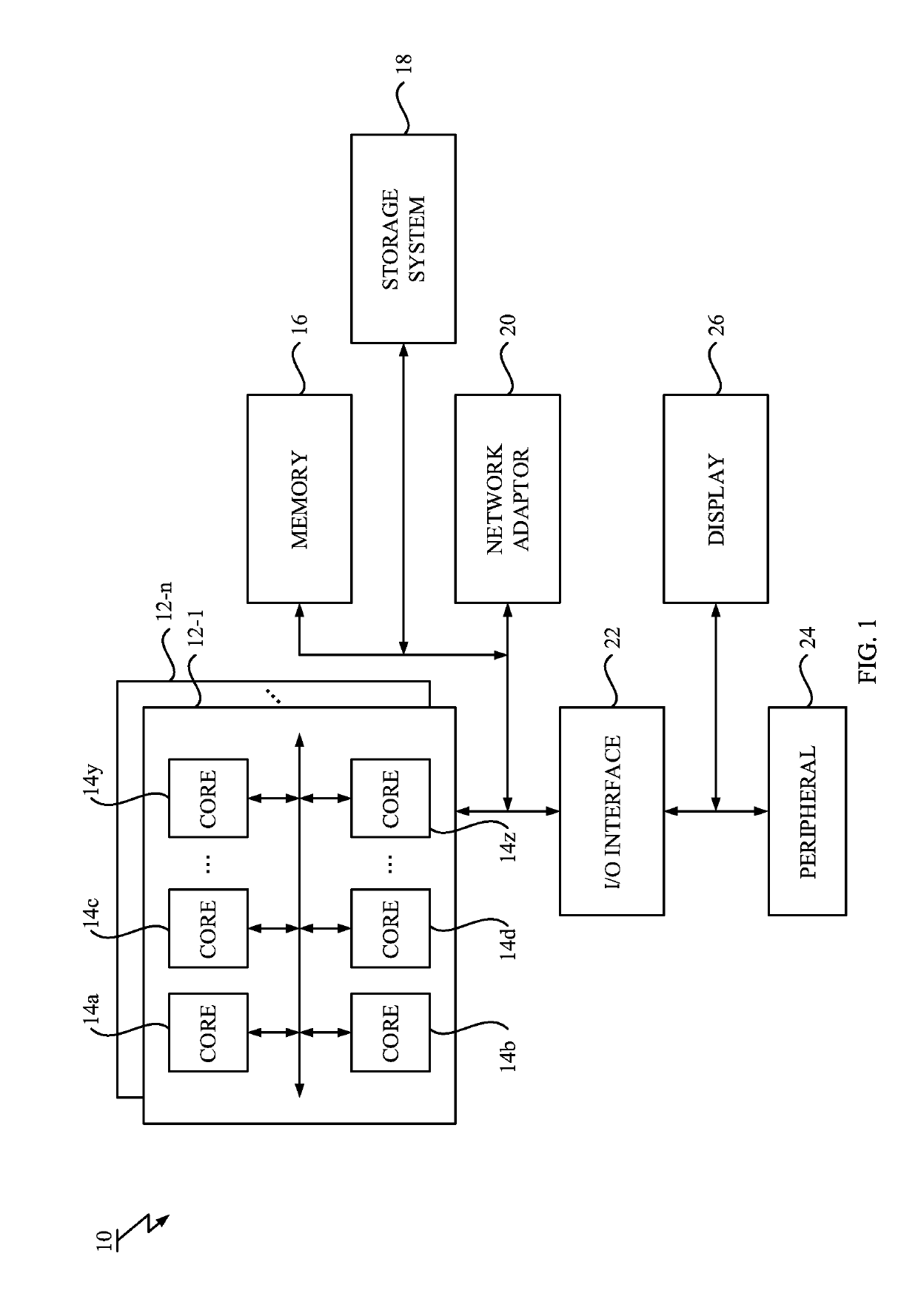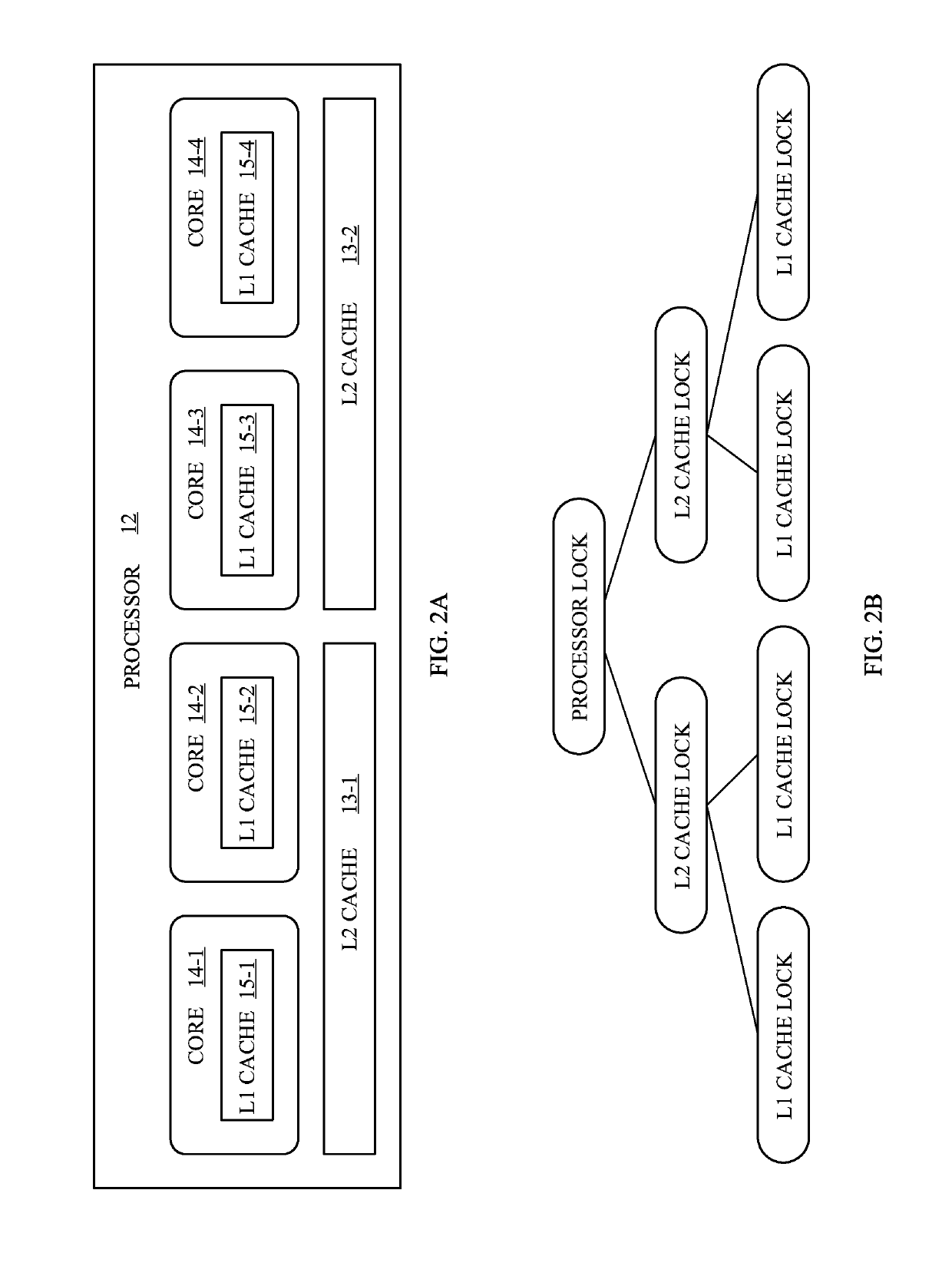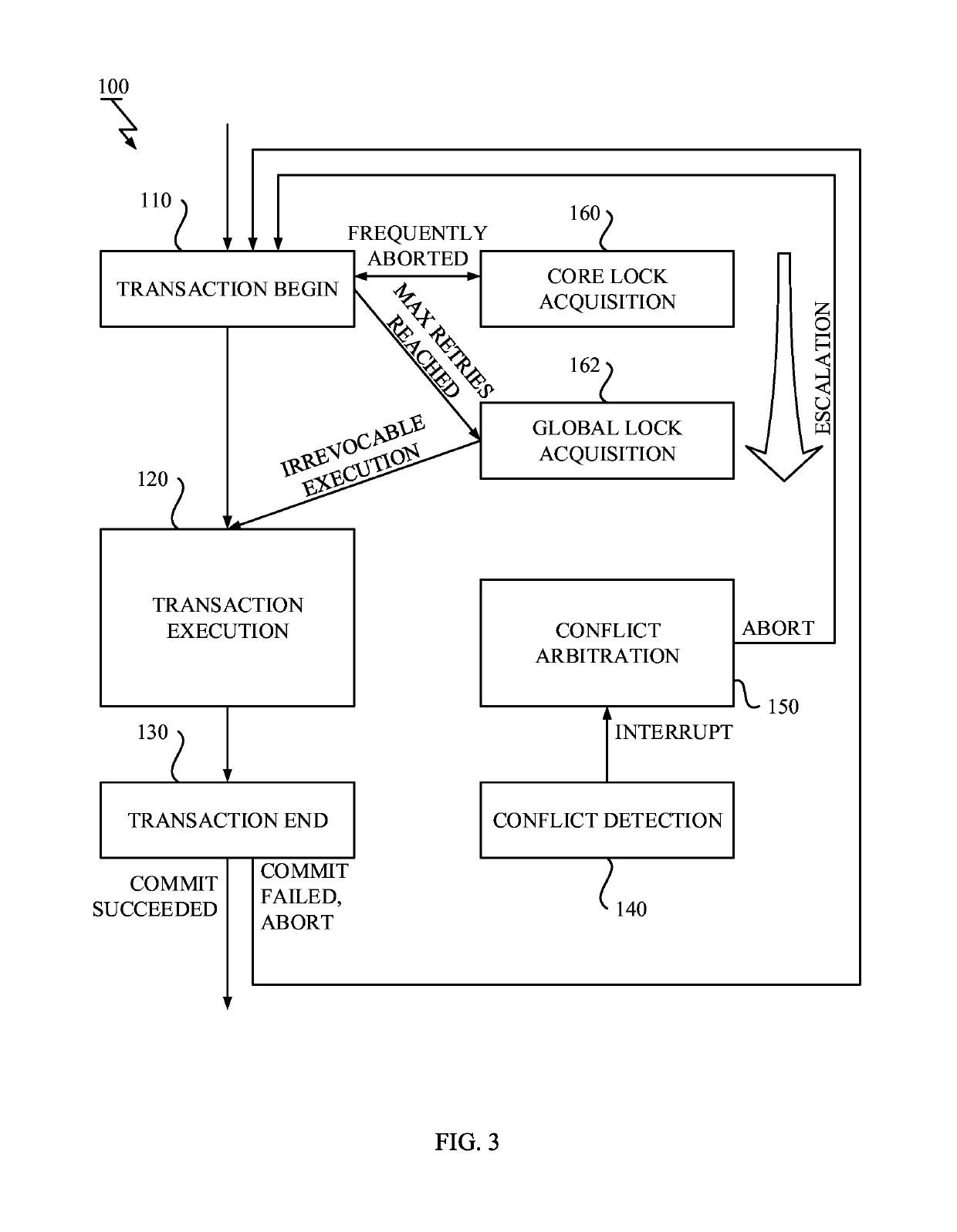Execution of program region with transactional memory
a transaction memory and program region technology, applied in the direction of multi-programming arrangements, instruments, data switching networks, etc., can solve the problems of serialization reducing the degree of concurrency in the execution of transactional memory, and so as to prevent the occurrence of transaction aborts
- Summary
- Abstract
- Description
- Claims
- Application Information
AI Technical Summary
Benefits of technology
Problems solved by technology
Method used
Image
Examples
first embodiment
[0052
[0053]Referring now to FIG. 3, a block diagram of a computer system and overview of a transactional memory execution are illustrated. As shown in FIG. 3, the computer system 100 may include a transaction begin module 110, a transaction execution module 120, a transaction end module 130, a conflict detection module 140, a conflict arbitration module 150, a core lock acquisition module 160 and a global lock acquisition module 162.
[0054]The transaction begin module 110 is configured to begin a transaction for a program region by using a transaction begin machine instruction, TBEGIN or XBEGIN (hereinafter only TBEGIN is mentioned). The transaction end module 130 is configured to end the transaction for the program region by using a transaction end machine instruction, TEND or XEND (hereinafter only TEND is mentioned). Each transaction begins with the TBEGIN instruction by the transaction begin module 110 and is ended by the TEND instruction by the transaction end module 130.
[0055]T...
second embodiment
[0077
[0078]Now referring to FIG. 6, it will be described a computer executable program for executing a program region with transactional memory support according to second embodiment of the present invention.
[0079]As shown in FIG. 6, a pseudo-code of a computer program implementing a transaction retry and hierarchical lock mechanism is shown.
[0080]The pseudo-code of the computer program includes computer-executable program code to determine whether a predetermined condition is satisfied (e.g., abort_ratio>Tcore_lock; the “abort_ratio” is a transaction abort ratio metric, and the “Tcore_lock” is a threshold for the transaction abort ratio metric) at Line 1 in beginning a transaction. The pseudo-code includes program code to acquire a corresponding core lock by a thread that executes the program region (corresponding to a transaction body omitted by the comment at Line 21) at Line 4 if the predetermined condition is satisfied. The corresponding core lock is identified at Lines 2-3 and...
third embodiment
[0088
[0089]Now referring to the series of FIGS. 7-8, it will be described a computer system and method for executing a program region according to third embodiment of the present invention. As described above, the first and second embodiment utilizes the two level hierarchical locks mechanism including the global lock and the one or more core locks. In contrast to the first and second embodiments, the third embodiment is an alternative embodiment of the present invention where not less than three levels of the hierarchical locks are utilized.
[0090]FIG. 7 illustrates a block diagram of a computer system 200 according to the third embodiment of the present invention. As shown in FIG. 7, as similar to the first embodiment, the computer system 200 includes a transaction begin module 210 that begins execution of a transaction for a program region in a target program, a transaction execution module 220 that executes the program region in the transaction, a transaction end module 230 that ...
PUM
 Login to View More
Login to View More Abstract
Description
Claims
Application Information
 Login to View More
Login to View More - R&D
- Intellectual Property
- Life Sciences
- Materials
- Tech Scout
- Unparalleled Data Quality
- Higher Quality Content
- 60% Fewer Hallucinations
Browse by: Latest US Patents, China's latest patents, Technical Efficacy Thesaurus, Application Domain, Technology Topic, Popular Technical Reports.
© 2025 PatSnap. All rights reserved.Legal|Privacy policy|Modern Slavery Act Transparency Statement|Sitemap|About US| Contact US: help@patsnap.com



